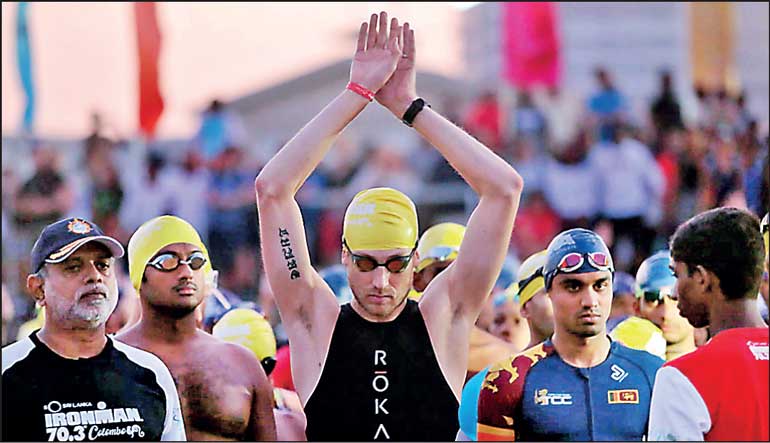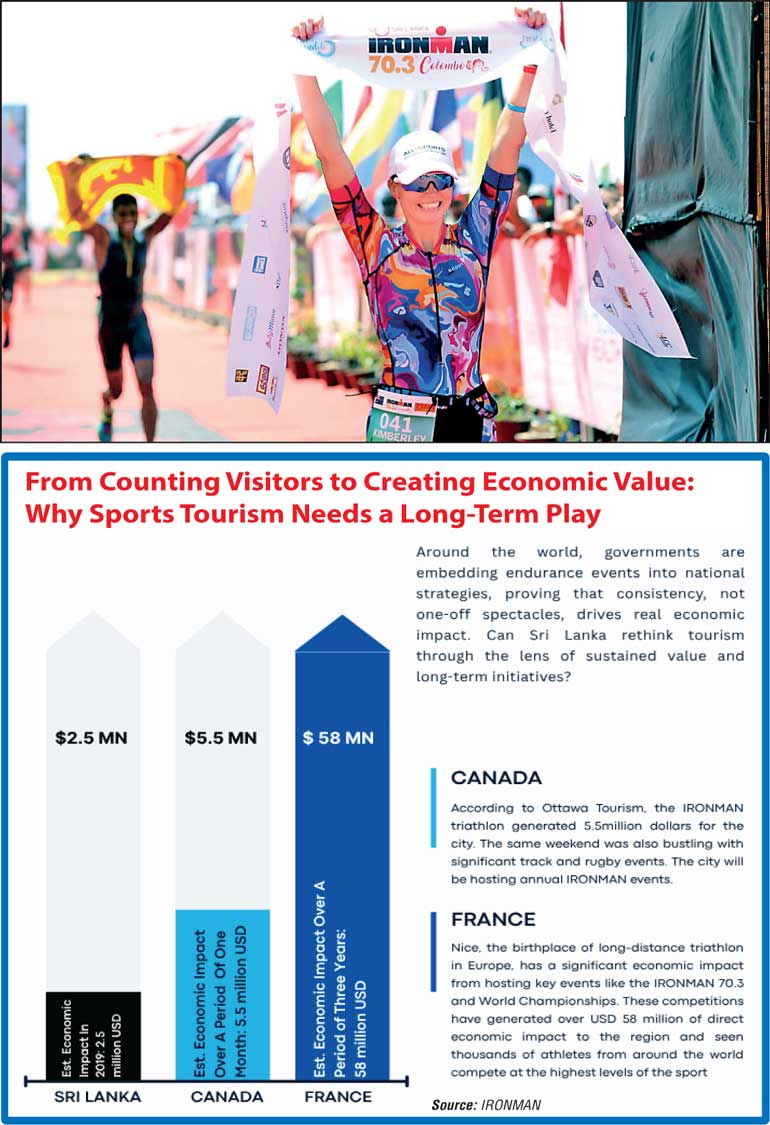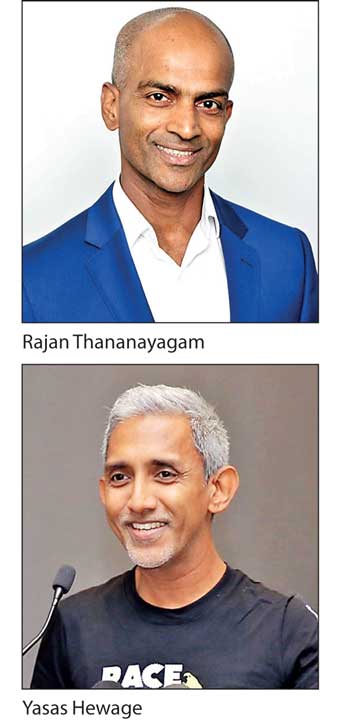Tuesday Dec 16, 2025
Tuesday Dec 16, 2025
Friday, 31 October 2025 00:00 - - {{hitsCtrl.values.hits}}


 As global travel behaviour evolves, endurance athletes have emerged as a new class of high-value travellers fuelling what experts now call the “racecation” economy. This fast-growing segment blends sport, travel, and culture, reshaping visitor economies worldwide.
As global travel behaviour evolves, endurance athletes have emerged as a new class of high-value travellers fuelling what experts now call the “racecation” economy. This fast-growing segment blends sport, travel, and culture, reshaping visitor economies worldwide.
According to Expedia Group’s 2025 Global Travel Trends Report, sports tourism accounts for nearly 10% of international tourism spending and is projected to hit $ 1.3 trillion by 2032. These travellers don’t just attend events; they compete, explore, and spend. Recognising this, governments around the world are forming long-term partnerships with major endurance brands such as IRONMAN, the World Marathon Majors, the Professional Triathlon Organisation (PTO), and Challenge Family. These collaborations consistently attract high-yield visitors whose economic impact extends far beyond a single race weekend.
The Sultanate of Oman has become a standout example in the Middle East. Since 2019, it has hosted seven IRONMAN events, steadily building a triathlon calendar in partnership with The IRONMAN Group. In September 2025, Oman’s Ministry of Heritage and Tourism signed a landmark global partnership extending through 2030, positioning Muscat as the 2029 IRONMAN 70.3 World Championship host city.
The initiative, now embedded in Oman Vision 2040, has an estimated total direct impact of $ 66 million between 2019 and 2030. Endurance and adventure sports are recognised as key pillars in the country’s national diversification strategy. As The IRONMAN Group Chief Executive Officer Scott DeRue explained, the collaboration will “deliver world-class racing experiences while showcasing Oman’s unique beauty and culture.” Oman’s success underscores the value of policy continuity. In contrast, Sri Lanka, which hosted South Asia’s first IRONMAN 70.3 in 2018, one year before Oman’s debut, has yet to build on that early momentum.
When Colombo hosted its inaugural IRONMAN 70.3 in 2018, all 880 slots sold out. This event drew 3,000 foreign visitors from 64 countries and generated over $ 2 million in tourism revenue. Families stayed an average of five to seven days, exploring beaches, heritage cities, and wildlife parks. “These participants will take Colombo to the world,” said Sports Tourism Expert and Race The Pearl and IRONMAN 70.3 Colombo Organiser Yasas Hewage. “Sports tourism can be a true thrust sector for Sri Lanka’s economy, drawing travellers to every corner of the island.”
A Kantar LMRB survey following the 2019 event found that each athlete spent an average of Rs. 300,000 (≈ $ 1,960) during their stay, three to four times higher than the average tourist spends. Over half stayed longer than a week. “These visitors don’t just race,” added Hewage. “They explore, they engage, and they share their stories. Each one becomes an ambassador for Sri Lanka.”
Countries that have embraced endurance events as part of their tourism identity are seeing strong results. On Australia’s Sunshine Coast, the IRONMAN 70.3, now in its 12th year, draws nearly 2,000 athletes annually. “IRONMAN 70.3 plays a key role in delivering our Major Events Strategy, which aims to generate AUD 86 million in economic impact through increased visitation and local spending,” said Mayor of Sunshine Coast Rosanna Natoli.
According to Ottawa Tourism, the IRONMAN triathlon and other sporting events held in the nation’s capital generated millions of tourism dollars for the local economy over the long weekend. An estimated economic impact of over $ 5.5 million, based on data from hotels and average visitor spending on food, transportation, and other local services.
Nice, France, has emerged as another model for how major sporting events can drive sustained economic growth through long-term partnerships. As part of its extended agreement with IRONMAN through 2028, the city will host multiple world championship events, including the 2025 Men’s IRONMAN World Championship and the IRONMAN 70.3 World Championships in 2026 and 2028, with the option to host again in 2030. This continued collaboration builds on a strong legacy. Since hosting the 2019 IRONMAN 70.3 World Championship, along with the 2023 and 2024 IRONMAN World Championships, Nice has generated over USD 58 million in direct economic impact for the region. The city’s appeal lies not only in its world-class facilities and Mediterranean setting but also in how seamlessly it integrates global endurance sport into its tourism and economic development strategy, positioning the French Riviera as a premier destination for athletes and visitors alike.
Similarly, Thailand has placed sport at the centre of its tourism agenda. “We are preparing to promote the country for both tourism and sports events,” said Thapanee Kiatphaibool, Governor of the Tourism Authority of Thailand (TAT), which launched the Amazing Thailand Grand Tourism & Sports Year 2025 campaign to align international triathlons, marathons, and fitness festivals with its visitor strategy.
“The lesson from these examples is clear,” said Hewage. “When governments commit beyond a single year, they create an ecosystem, not just an event. Institutional continuity breeds confidence, investment, and recurring demand.”
Despite its early success, Sri Lanka has yet to institutionalise a sports tourism policy. “The need is to lock in world-class active sports events and couple them with creative, authentic experiences,” Hewage explained. “That will help double our current per-day spend of $ 171.”
He estimates that, with proper policy alignment, Sri Lanka could expand its $ 2 million race impact in 2019 into a $ 100 million opportunity by 2030, by attracting “the right kind of visitors, CEOs, entrepreneurs, and families who travel for purpose and wellness.”
Serendib Multisport Director and IRONMAN 70.3 Colombo Race Director Rajan Thananayagam shares that vision. “We punched above our weight. Our aim now is to make Sri Lanka a permanent global endurance event circuit destination,” said Thananayagam, an IRONMAN World Championship finisher. Under his leadership, the Colombo event achieved a 91.6% athlete satisfaction score, surpassing many long-established global venues.
Sri Lanka’s brief but brilliant IRONMAN experience proved the concept. The next step is to scale it—with structure, consistency, and a growth-centric government policy recognising endurance events’ long-term value. As the global tourism race accelerates, Sri Lanka faces a choice: continue chasing visitor numbers, or invest in value-driven, high-yield segments like sports tourism. Just as every triathlete knows, endurance is not about speed but consistency. For Sri Lanka, it’s time to commit to the long game. Because in the global race for sports tourism, those who stay the course always win.